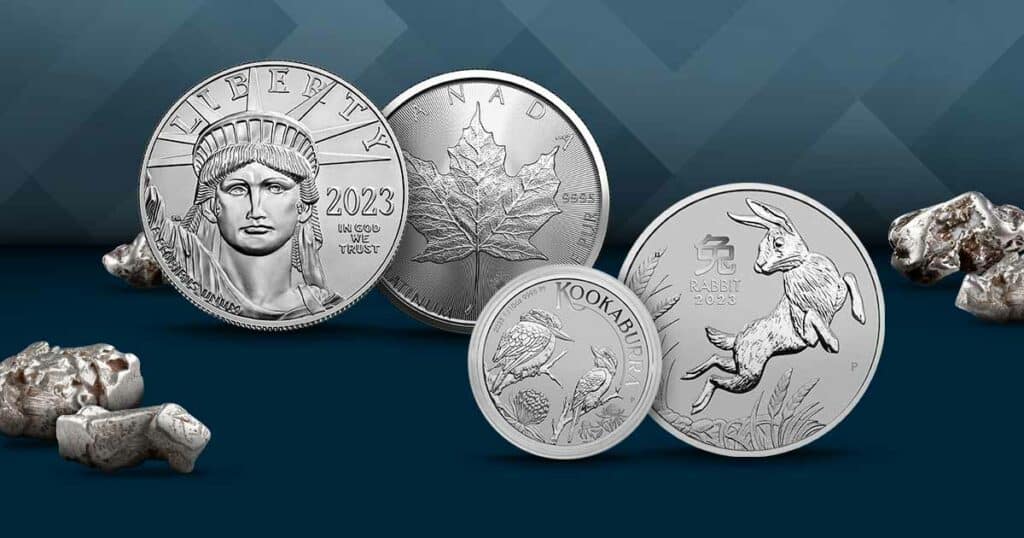
Does Platinum Tarnish?
With its captivating sheen and versatile applications, platinum has earned its reputation as a coveted and valuable metal. Its distinctive qualities have made it a symbol of prestige and elegance, often associated with luxury jewelry, industrial processes, and advanced technologies. One common question about platinum is whether it tarnishes like other metals. From its unique properties to its significance in various industries, platinum’s reputation as a popular and multifaceted metal is well-earned.
The Marvel of Platinum
Platinum is a chemical element with the symbol Pt and atomic number 78. It belongs to the platinum group metals (PGMs), including palladium, rhodium, ruthenium, iridium, and osmium. Among these elements, platinum stands out for its exceptional properties. Its silvery-white color, density, malleability, and excellent resistance to corrosion and heat make it a sought-after material for various applications.
Tarnishing: An Overview
Tarnishing is a process that affects many precious metals, causing them to lose their original luster and develop a dull, discolored appearance. It generally occurs when metals react with gases in the atmosphere or substances like sulfur compounds, forming thin layers of tarnish on the surface. Common metals like silver, copper, and brass are well-known for tarnishing over time.
Platinum’s Resistance to Tarnishing
One of platinum’s most remarkable characteristics is its high resistance to tarnishing and corrosion. Platinum exhibits excellent stability in various environments, unlike metals prone to oxidation, such as iron or copper. This exceptional resistance is attributed to its inert nature and ability to withstand chemical reactions with common atmospheric elements like oxygen, moisture, and sulfur compounds.
Platinum’s resistance to tarnishing makes it an excellent choice for jewelry and other objects that require long-lasting shine and durability. It doesn’t require frequent cleaning or polishing to maintain its luster, contributing to its popularity in the luxury goods market.
Differences Between Platinum and White Gold
When deciding on fine jewelry, the question of platinum versus white gold may arise. While white gold and platinum are popular choices for jewelry, they have distinct characteristics that set them apart. Platinum, known for its natural white color and exceptional resistance to tarnishing and corrosion, exudes an unmistakable radiance that does not fade over time.
On the other hand, white gold, an alloy of yellow gold and other metals, achieves its silvery hue through plating with rhodium. This process may require occasional reapplication to maintain its luster. Platinum’s heft and density contribute to its durability, making it perfect for intricate designs and daily wear. At the same time, white gold jewelry offers a more budget-friendly alternative that retains the appeal of silver-toned metal.
The choice between these remarkable materials ultimately depends on personal preferences, budget considerations, and desired durability, each offering a unique allure to suit diverse tastes.
Applications of Platinum
Platinum, a metal of extraordinary qualities, has established itself as a symbol of enduring elegance and innovation. From jewelry to driving transformative advances in diverse industries, platinum’s remarkable attributes continue to shine brilliantly. The various facets of platinum’s allure span its captivating presence in jewelry, its pivotal role in industrial progress, its contributions to medical and dental fields, and its unassuming yet indispensable impact on refining processes.
Together, these facets highlight the versatility and brilliance that define platinum, a metal that bridges the realms of tradition and modernity, aesthetics, and technology.
Timeless Elegance and Symbolic Significance
Platinum’s allure for jewelry combines stunning aesthetics with unmatched durability. Renowned for its distinctive white hue, platinum jewelry captivates designers and wearers alike. Its natural color does not require plating, setting it apart from white gold jewelry, which often necessitates rhodium plating to achieve a similar appearance.
The metal’s inherent strength and resistance to tarnishing ensure that platinum jewelry retains its brilliance for generations, making it an emblem of everlasting love and commitment. From engagement rings to anniversary bands, platinum’s enduring beauty becomes a tangible expression of the enduring bonds it represents.
Platinum’s Pivotal Role Beyond Glamour
Beyond its dazzling presence in jewelry, platinum is pivotal in diverse industrial sectors, leveraging its exceptional properties to drive innovation. Automobile catalytic converters rely on platinum’s catalytic properties to transform harmful exhaust emissions into less toxic substances, contributing significantly to cleaner air and reduced environmental impact.
Platinum’s remarkable conductivity and durability make it a key component in various electronic devices, from advanced sensors to cutting-edge technologies. Moreover, the chemical and petroleum industries benefit from platinum’s heat resistance and corrosion resilience, as platinum-based catalysts enhance chemical reactions, streamline processes, and elevate efficiency.
Medical Marvels and Dental Wonders
Platinum’s biocompatibility and corrosion resistance have led to its integration into the medical and dental fields, where its properties serve as foundations for innovative applications. Implantable medical devices, such as stents and pacemakers, are crafted from platinum because they coexist harmoniously with the human body without triggering adverse reactions.
The dental realm also recognizes platinum’s prowess, as it finds utility in creating durable and biocompatible dental restorations, ensuring oral health and the preservation of radiant smiles.
Refining Processes and Platinum’s Unseen Impact
Underpinning the chemical and petroleum industries is platinum’s role as a catalyst, acting as a silent yet influential agent of transformation. Platinum-based catalysts are catalysts in various refining processes, serving as accelerators for chemical reactions that yield valuable products.
From petroleum refining, where they aid in producing cleaner fuels, to chemical synthesis, platinum catalysts facilitate the creation of many essential compounds. This critical role highlights platinum’s presence at the forefront of advancing industries, often quietly steering progress.
Platinum’s Enduring Legacy
Platinum’s reputation as one of the more luxurious and durable metals is well-deserved, thanks to its resistance to tarnishing and exceptional properties. This rare metal’s ability to maintain its luster and beauty over time has contributed to its prominence in various industries, from platinum bullion to jewelry and high-tech applications.





